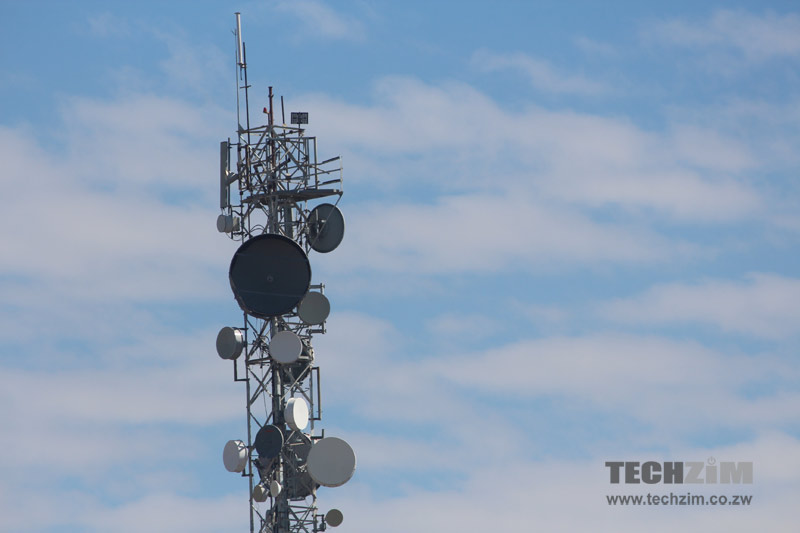Many-a-time we’ve heard infrastructure sharing being touted as the end to most of our problems as mobile network subscribers. “Cost of data will be reduced”, is one of the most commonly focused on of the benefits. Considering that Econet and NetOne announced such a deal earlier this year, we wanted to look at what we can expect from such a deal.
This article will look at what infrastructure sharing is, its forms, along with global developments. Finally, we will also look at the impacts of such projects for both consumers and the network providers.
Take it from the top…
Put simply, mobile infrastructure sharing is the process by which one or more operators share infrastructure to deliver a mobile service to end-users. What most don’t understand is that there are two types of mobile infrastructure sharing; Passive and Active. What are the differences?
Passive sharing – Two or more operators share passive network elements; which could include sites, towers, support costs such as energy and maintenance, and backhaul. 3rd party tower firms may also be involved.
Active sharing – Any passive sharing plus active network elements; e.g. Radio Active Network equipment, core ring, and sometimes actual spectrum sharing. 3rd party tower firms may also be involved.
Passive sharing – combining sites, masts, fuel and in some cases backhaul – has become most popular given that it offers cost savings (up to 20–30% in opex and 40–50% in capex) while preserving the network as a differentiated asset to compete on given that spectrum holdings remain separate. In theory, active sharing – which extends to the radio access network and core – offers more scope for cost savings, but in practice these have proven difficult to realise given integration complexities, with this model also encountering regulatory discouragement given perceived risks to competition).
GSMA Closing the coverage gap — a view from Asia: 2015
Network operators can also go into joint deployment projects where they lay down infrastructure in different regions but then share it afterwards. In Europe, this has often been limited to areas that aren’t densely populated.
MNOs can agree on national roaming where operators use each other’s networks to provide services in geographic areas where they have no coverage. Such arrangements effectively multiply any one carrier’s ability to cover the entire country, without actually having to deploy infrastructure everywhere. Operators might roll out competing networks in urban areas but allow each other to roam on their networks in rural areas.
What’s Happening in Asia?
- There were an estimated 64 sharing agreements in place as of 2014, of which 9% involve active network components
- Most network sharing initiatives are commercially oriented, rather than mandated by regulators, driven by cost reduction pressures, coverage obligations attached to 3G and 4G spectrum licenses and, in some cases, a shift in the focus of competition from the network towards the service layer – Bharti in India being a good example of this.
- India was one of the first movers, with the regulator modifying license requirements to allow sharing in 2007. Since then, Bharti Infratel, Indus and a host of other tower companies (towercos) have formed as a result of operators spinning off tower assets, with 3G coverage having grown to 75% since commercial services were first offered in 2010.
- Malaysia has adopted a sharing model across the board and extended this to 4G. In 2013, Telenor and Ooredoo adopted a tower sharing approach in Myanmar, which has helped extend 3G coverage to around 40% of the population as of the end of 2014 following years of limited and patchy coverage.
What’s happening in Europe?
In most European countries there’s some infrastructure sharing of sorts. Here are a few examples:
- In Sweden 4, mobile networks have entered joint deployment since 2001 until now. Mobile networks Telenor and Hi3G have an infrastructure sharing agreement covering rural areas, whilst Telia and Tele2 have a nationwide infrastructure sharing agreement.
- Orange and Vodafone in Spain don’t have a joint venture. Each MNO roams into its partner’s network in rural areas with less than 25000 inhabitants.
- In the UK only 3G infrastructure is actively shared.
… And Africa?
- MTN & Cell C (in SA) implemented a national roaming agreement in 2018. This sees MTN provide Cell C subscribers with 3G and LTE service in certain areas. The deal saw Cell C increase its LTE coverage from 33% of its subscribers to 80%.
- The deal hasn’t been without its own drama as Cell C reportedly owes MTN R400 million (over half of which MTN had to write off).
- In November 2015, the government of Mozambique passed the first reading of a new bill to amend telecoms legislation to oblige operators to share their infrastructure, though there seems to be more coverage on the government’s action than the networks – making me suspect that this hasn’t been acted on.
- As aforementioned, back in May local MNOs Econet and NetOne finally decided to share infrastructure and announced an agreement
Overall, more needs to be done in Africa and the ITU acknowledged as much:
Collaboration on network infrastructure and services is a proven global model. As such, incumbents in Africa will perhaps have to consider opening up their networks to generate new revenue even if that means they will get a “smaller piece of the pie.”
… network sharing appears increasingly inevitable if African operators are going to survive.
Funke Opeke – MainOne CEO
What benefits have come about from all of this?
Benefits have to be looked at from two perspectives, the network operators and the consumers. For network operators the following benefits have been realised in some instances:
- Cost-saving benefits for participating networks. In theory, active sharing offers the greatest scope for cost savings as it potentially involves combining more network elements; however, in practice, these have proven difficult to realise given the complexities involved in integrating core networks.
- Increased coverage in areas where cost of deployment by a single operator is high
- Active sharing is said to help drive better network coverage by several European network regulatory authorities. (Belgium, Finland etc)
- Sharing might lead to increased consumer/customer choice especially in areas where it would otherwise not make financial sense to serve. Increased competition is always welcome
- In France, it was observed that infrastructure sharing in the form of national roaming had a strong impact on cost-saving and therefore on competition
- Spectrum sharing may have a positive impact on customer experience. It could lead to better quality of service since through combining their spectrum, partners are able to offer higher data peak rates to consumers.
- There are a number of environmental benefits – visual impact of mobile networks on the landscape is reduced since there is less infrastructure laid down. Reduced energy consumption. Fewer citizens have to worry about base station radiation if there are fewer base stations.
What are some of the downsides?
- Unfortunately, the extent to which savings are passed on to consumers depends on the market structure and more generally the level of competition in the market, which means it might not result in cheaper rates from mobile network operators in some cases.
- MNOs which don’t participate in the initial phases have difficulty participating in shared infrastructures of other MNOs. For example, if Econet and Telecel went into an agreement to share infrastructure
- This also makes those MNOs less competitive
- Joint decision making means these projects take more time than one network with a single vision would
- Infrastructure and mobile coverage as a whole may be more vulnerable as there is less redundancy due to fewer independent networks. You can see how problems may arise in re-deploying infrastructure in disaster-hit areas if two organisations have to sign off on the infrastructure instead of one.
It seems globally the trend has shifted and most mobile network operators and in some cases regulators are more acceptive of these deals. For rural coverage, it seems some type of sharing is necessary if covering the entire nation is of priority.














Comments
One response
Any model which reduces the MNOs’ cost structure is what developing economies need, to make data affordable, and lead to ICT-driven economic development…
So passive sharing of infrastructure, rural roaming and deployment of base stations by the regulator, and largely revenue-based licence fees, are some of the crucial factors to achieve this!
It’s high time we moved from capitalist pricing to a developmental one in this area in particular.